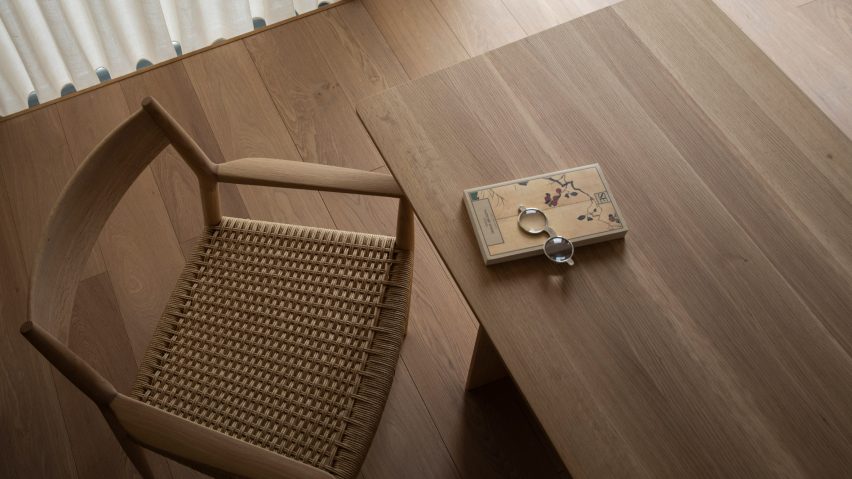
Keiji Ashizawa Design and Norm Architects pare back Tokyo apartments
Concrete walls, wooden floors and simple furnishings form "transparent" living spaces within this pair of formerly light-starved Tokyo apartments renovated by Norm Architects and Keiji Ashizawa Design.
Constructed in the 1980s, the 36-unit Kinuta Terrace apartment block in Tokyo is arranged around a verdant central courtyard that's meant to give residents the experience of living in a family home with a garden.
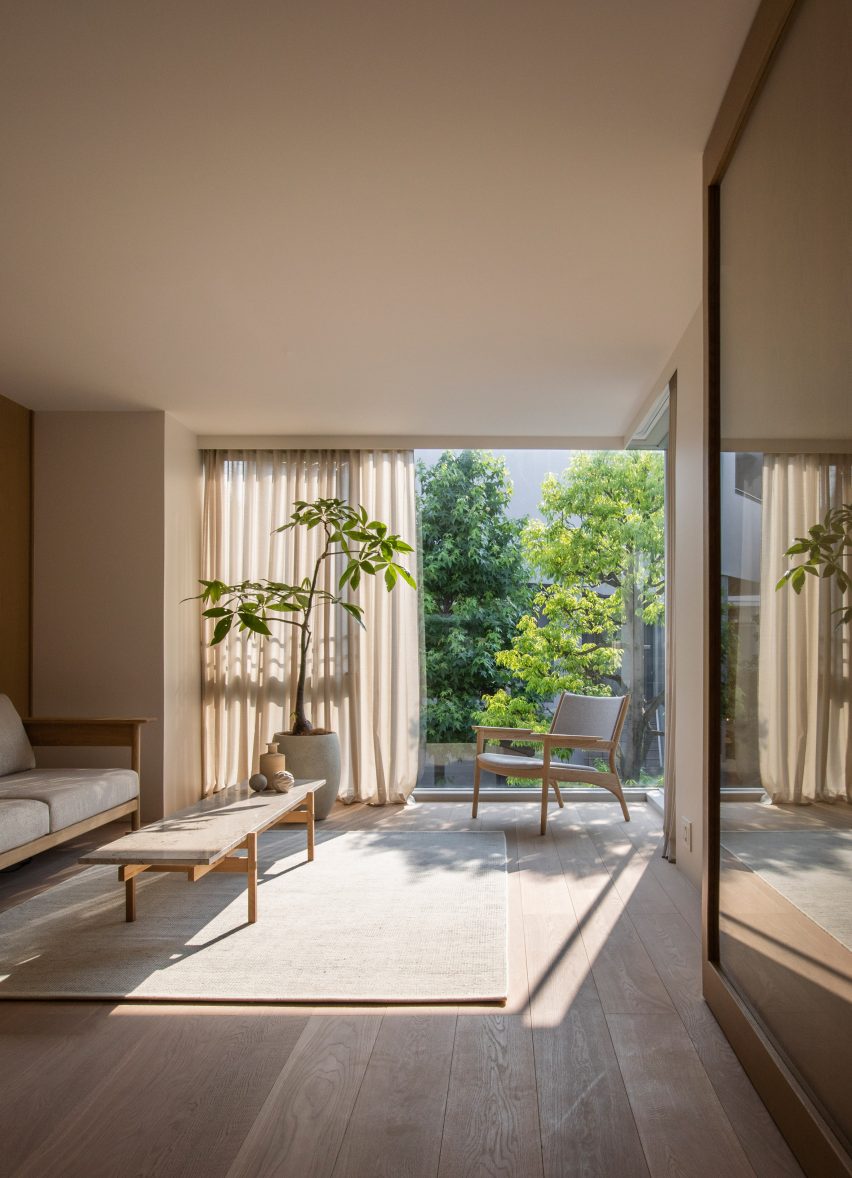
Keiji Ashizawa Design and Norm Architects have collaborated to transform two of the apartments which, despite their proximity to green space, felt dark and closed off.
Together, the studio's wanted to create "an environment where all elements are as closely connected as possible".
"Even though the architecture featured an open and dynamic structure, it was not reflected in the interior," Keiji Ashizawa Design's eponymous founder told Dezeen.
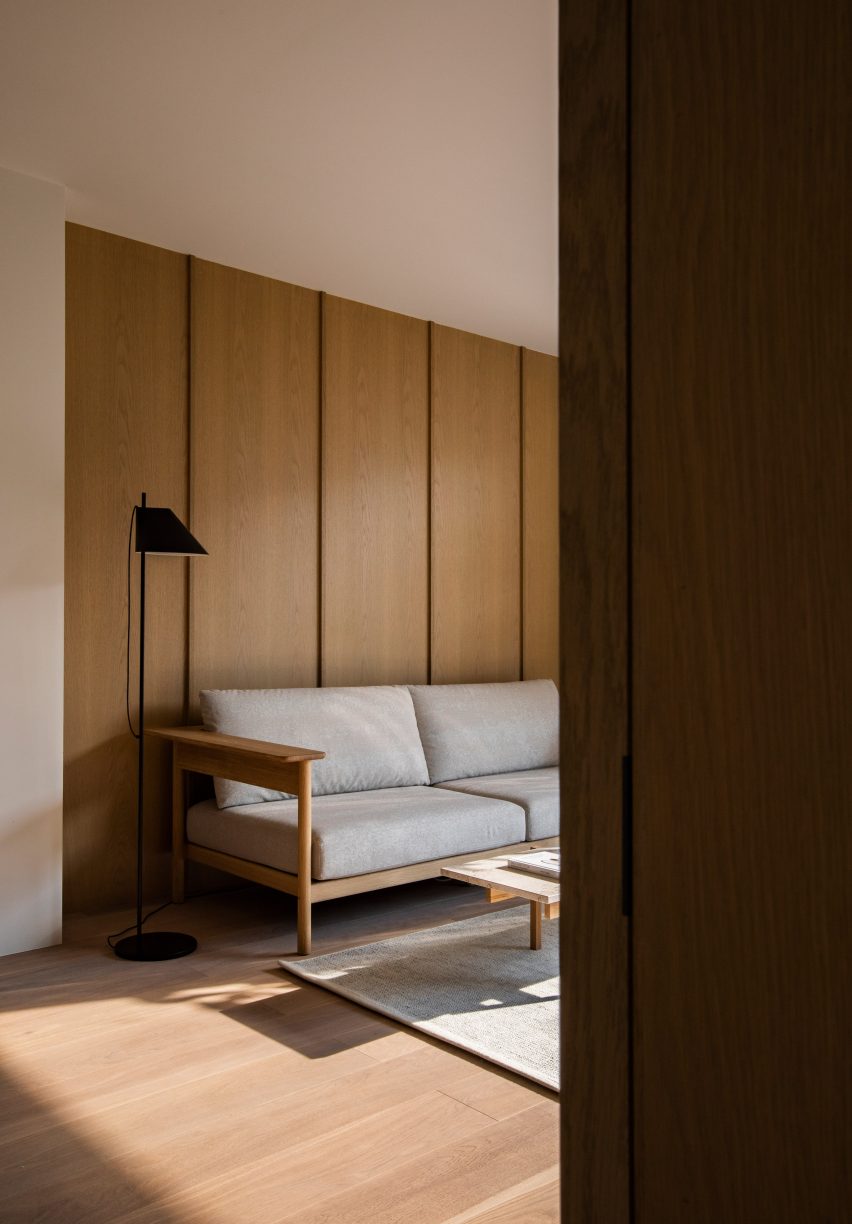
"It was a clear goal to get as much natural light and air into the apartments as possible, which is why we have worked with layers and transparency, light and shadow. Not only in the architecture, but also in each of the furniture pieces," said Frederik Werner, associate partner at Norm Architects.
"Nature feels integrated into the apartment from most rooms so that, when looking out into the courtyard, you can't quite tell you're in a city as immense as Tokyo."
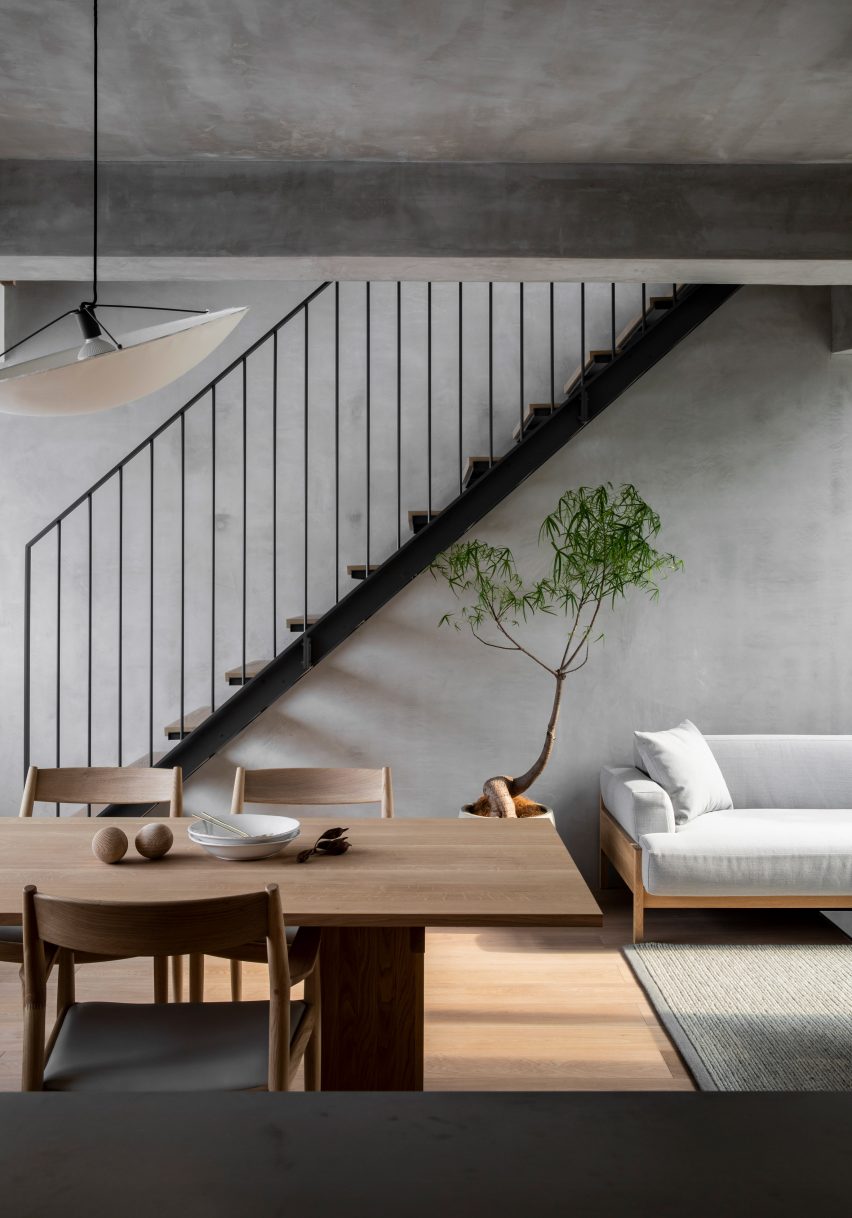
The internal layout of both apartments have been reconfigured to form fewer, but larger living spaces through which natural light can flow more freely.
Walls throughout have been overlaid with concrete, while floors are clad with oak-wood boards. Timber has also been used to craft several fixtures in the homes like the kitchen cabinetry and tall, book-lined shelving units that appear in the apartments' studies.
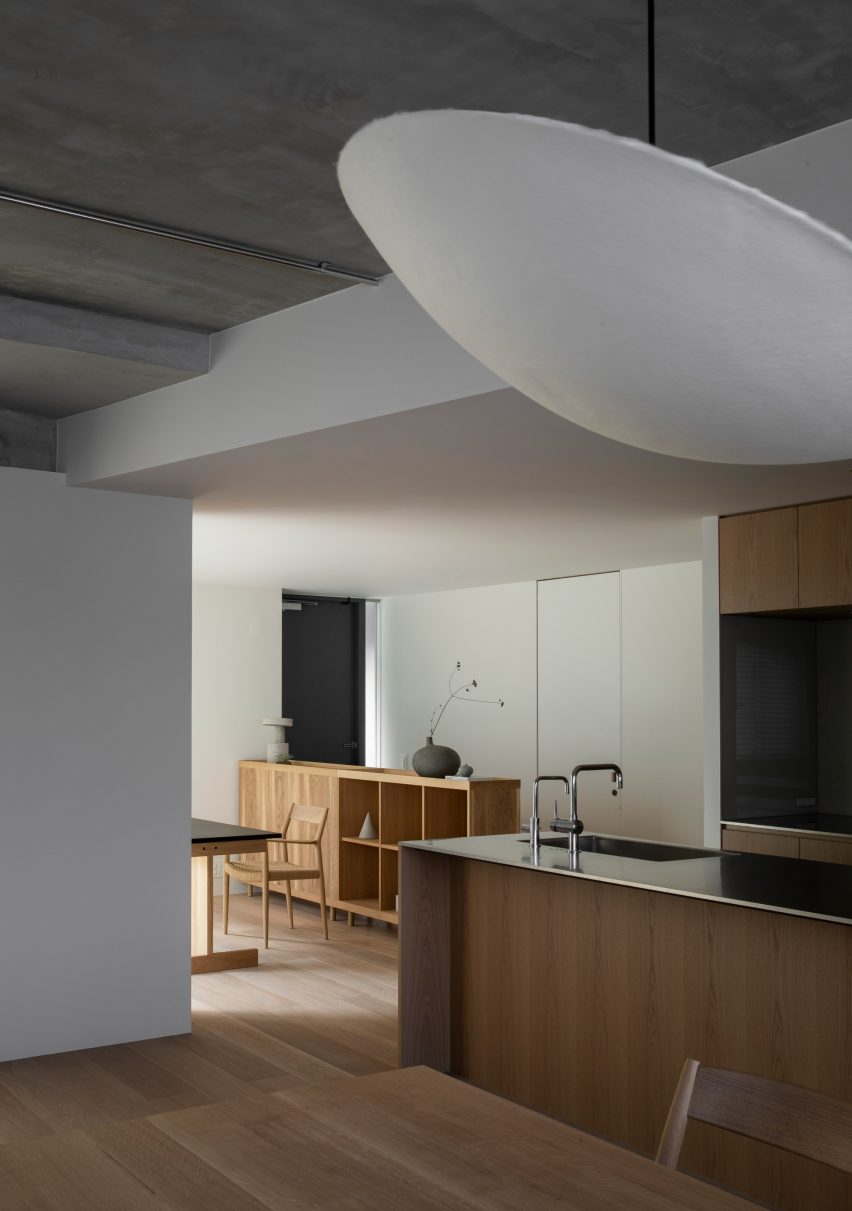
Sheer, sand-coloured curtains that are suspended in front of the expansive windows keep views of the courtyard largely on show.
Earth-toned ceramic plant pots have been dotted around as decor.
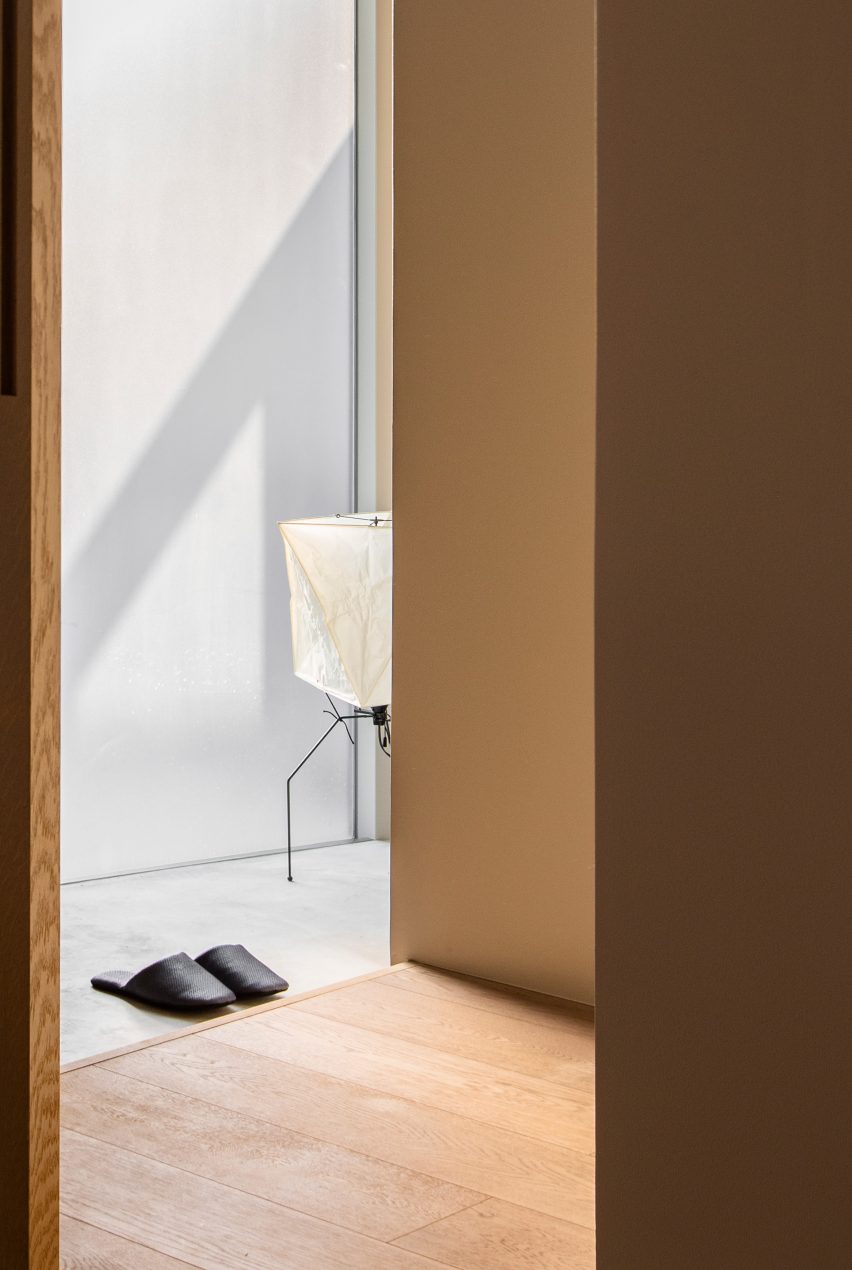
"We have strived to bring in materials that are natural, tactile and patinate beautifully with time," explained Werner.
"It's well known that people connect to their environments with all their senses, but in recent times it seems like we have forgotten these basic connections, something we wish to bring back with the materials chosen for the apartments."
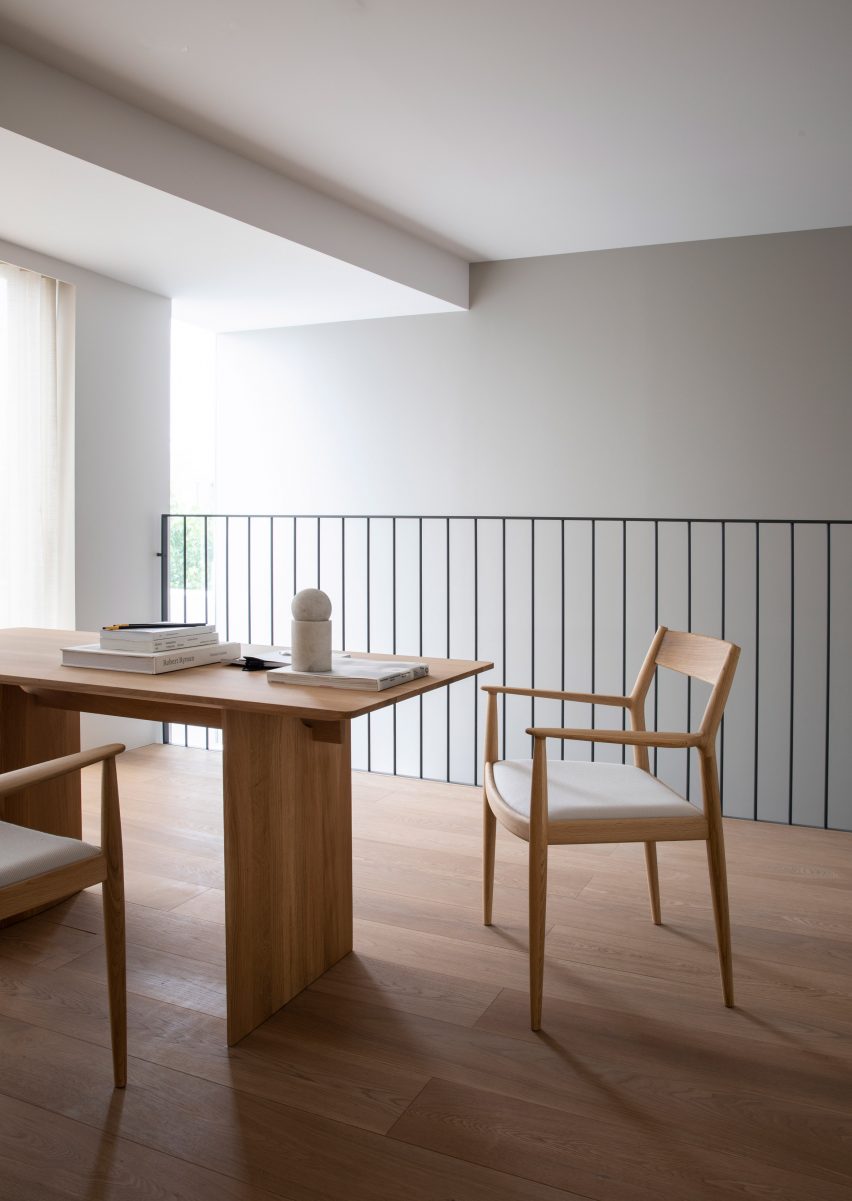
Keiji Ashizawa and Norm Architects worked alongside Japanese furniture brand, Karimoku, to design an array of pieces for the homes – together they will be sold under the brand's sister company, Karimoku Case Study.
Among them is a pale grey sofa with an oak-wood frame, a coffee table topped with a thin pane of black-tinted glass and dining chairs crafted from timber off-cuts found in Karimouku's factory.
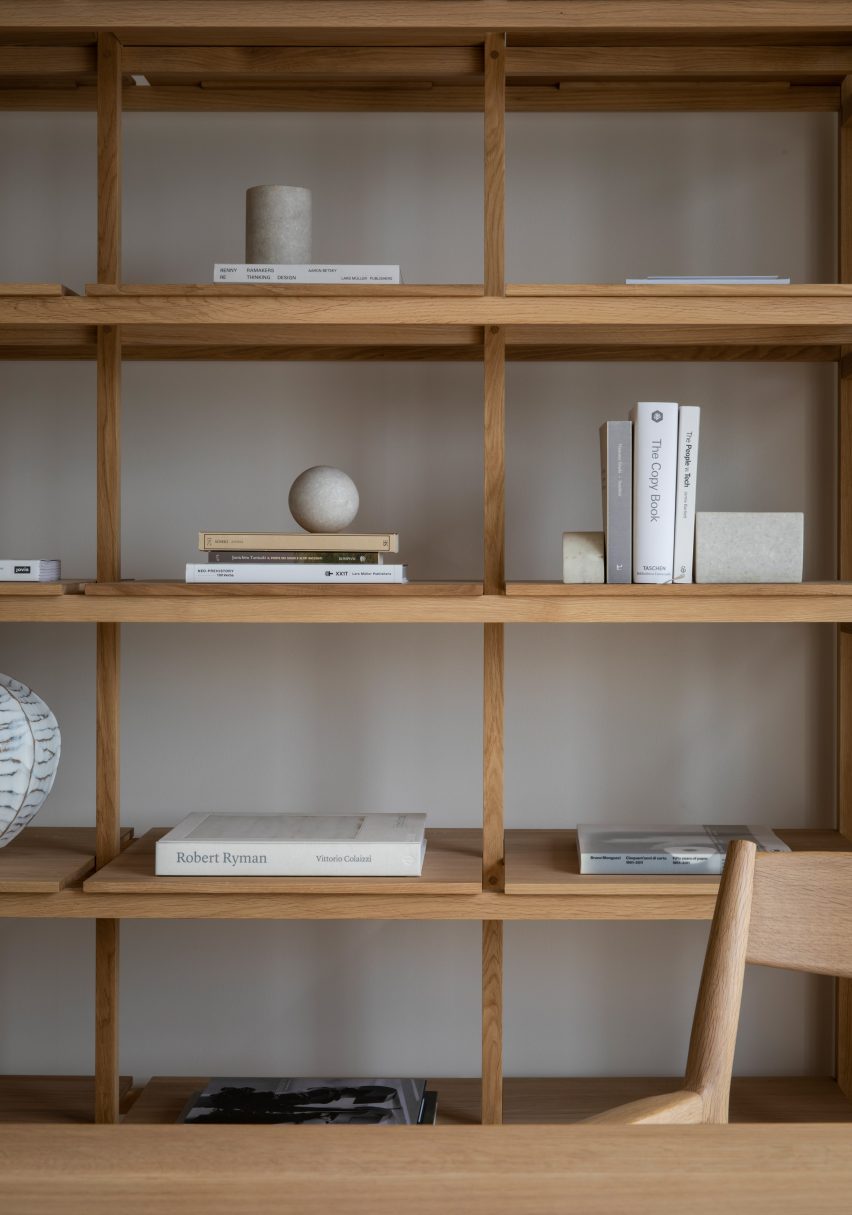
Copenhagen-based Norm Architects first teamed up with Keiji Ashizawa Design when the Tokyo-based studio hosted a creative workshop on its home turf.
"Our workshops in Tokyo and Kyoto for this project played the main role in having great discussions and mix up two different aesthetic senses," said Ashizawa.
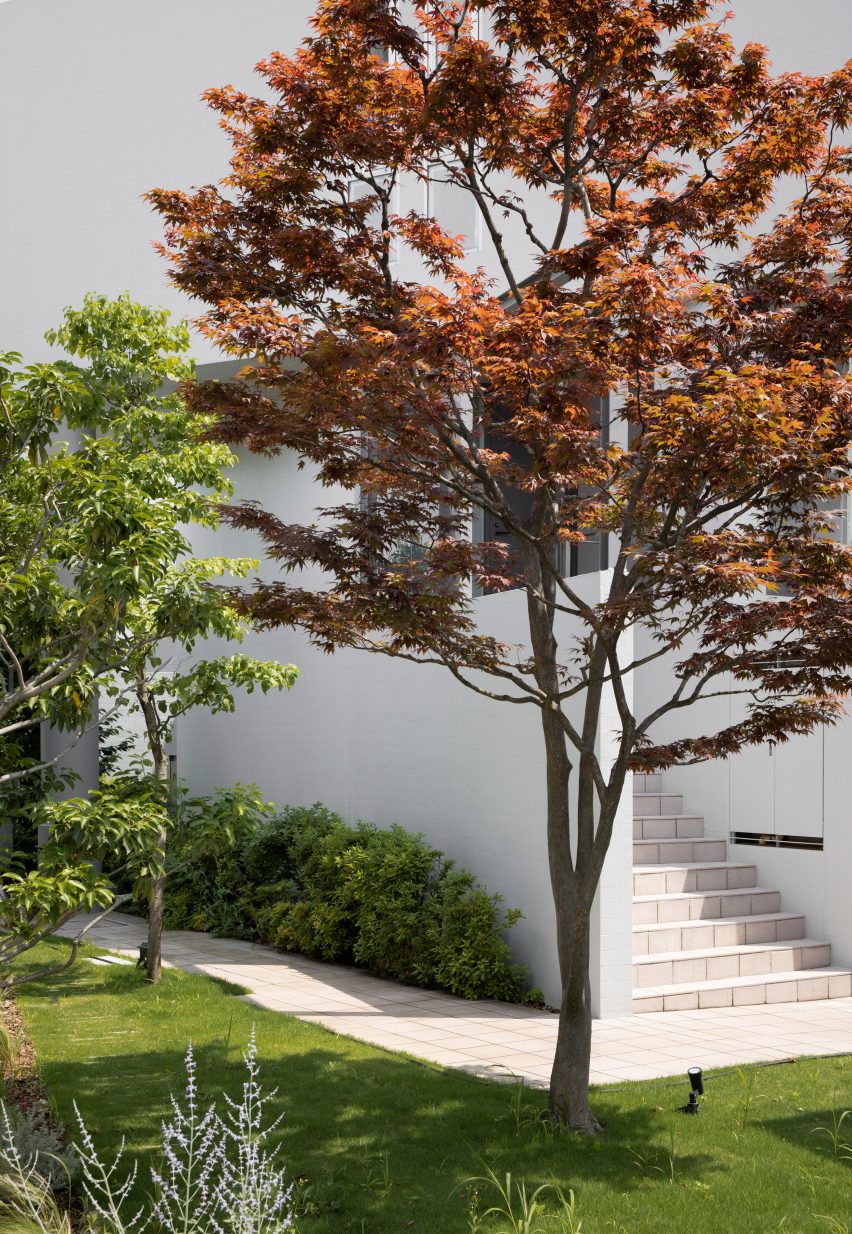
"It seems like there has always been a close connection and fascination across both [Scandinavian and Japanese] cultures, especially when it comes to our architecture and design heritage," continued Werner.
"Bringing these traditions up to date, within a more modern universe like the Kinuta Terrace, has been a pleasure."